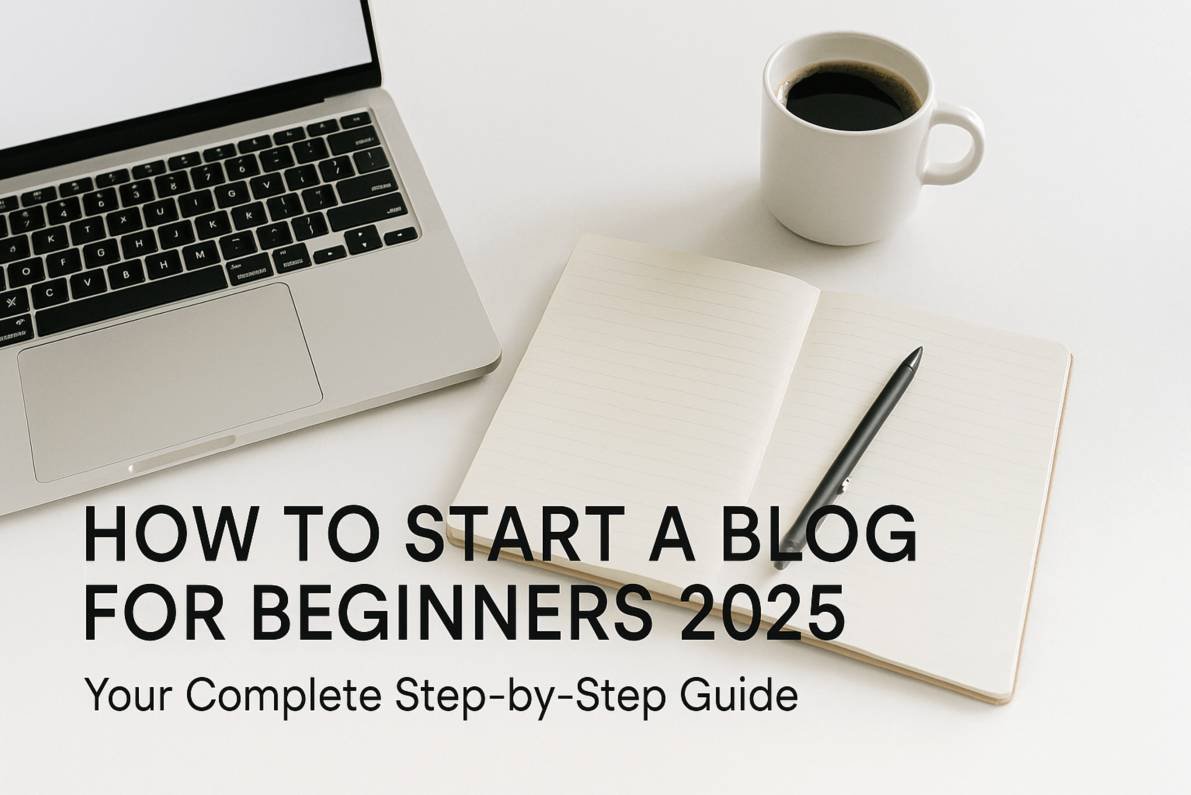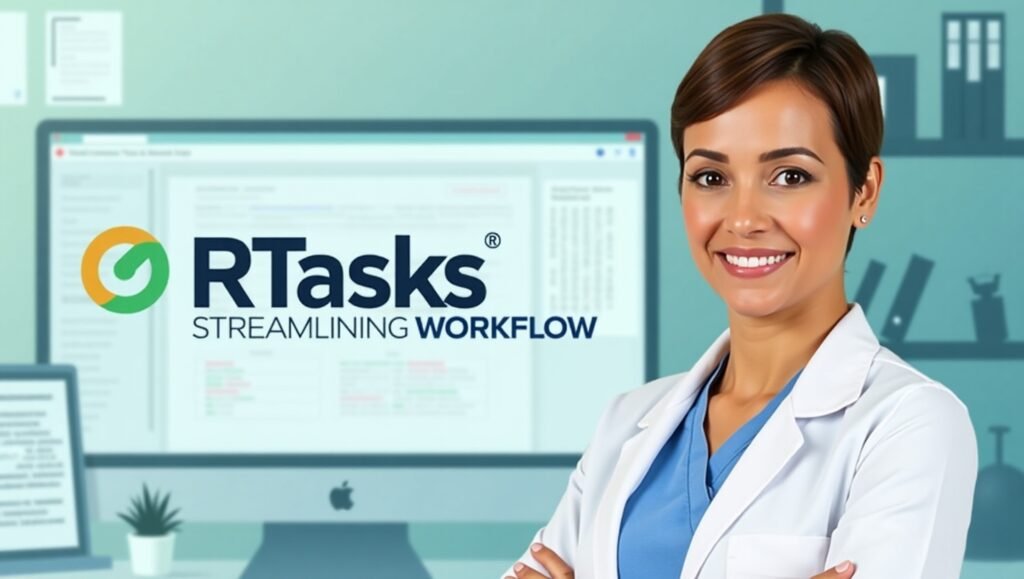Starting a blog in 2025 might seem overwhelming with all the options available, but it’s actually easier than ever to get your voice heard online. Whether you want to share your passion, build a business, or create a side income, this comprehensive guide will walk you through everything you need to know to launch your successful blog.
Why Start a Blog in 2025?
Blogging remains one of the most powerful ways to build an online presence, share your expertise, and even generate income. With over 600 million blogs on the internet today, there’s clearly room for your unique voice and perspective. The beauty of blogging in 2025 is that the tools have become incredibly user-friendly, and the monetization opportunities have expanded significantly.
Here are some compelling reasons to start your blog this year:
- Low startup costs: You can get started for less than $50 per year
- Flexible income potential: From affiliate marketing to selling your own products
- Build authority: Establish yourself as an expert in your field
- Connect with your audience: Create meaningful relationships with like-minded people
- Creative outlet: Express your thoughts and ideas freely
Step 1: Choose Your Blog Niche and Define Your Goals
Before diving into the technical aspects, you need to get clear on what you want to blog about and why. Your niche should be the sweet spot between what you’re passionate about, what you know well, and what people are searching for online.
Popular profitable blog niches in 2025 include:
- Personal finance and investing
- Health and wellness
- Technology and gadgets
- Food and cooking
- Travel and lifestyle
- Business and entrepreneurship
- Parenting and family life
Set clear goals for your blog:
- Personal goals: Do you want to share your expertise, document your journey, or build a personal brand?
- Financial goals: Are you hoping to make a few hundred dollars monthly or build a full-time income?
- Timeline goals: When do you want to see results? (Be realistic—most successful blogs take 6-12 months to gain traction)
Step 2: Choose the Right Blogging Platform
Your blogging platform is the foundation of your online presence, so choose wisely. Here are the top platforms for 2025:
WordPress.org (Self-Hosted) – Recommended for Most Beginners
WordPress powers over 40% of all websites on the internet, and for good reason. It offers unlimited customization, thousands of themes and plugins, and complete ownership of your content.
Pros:
- Complete control over your blog
- Unlimited monetization options
- Extensive plugin library
- SEO-friendly structure
- Can handle unlimited growth
Cons:
- Requires a learning curve
- Need to handle hosting and maintenance
- Slightly more technical setup
Alternative Platforms for Specific Needs
Substack – Perfect for newsletter-style blogs and building a subscriber base
Wix – Great for beginners who want drag-and-drop simplicity
Squarespace – Ideal for visually-focused blogs with beautiful templates
WordPress.com – Simplified version of WordPress with hosting included
Step 3: Get Your Domain Name and Hosting
Your domain name is your blog’s address on the internet (like yourblogname.com), while hosting is the service that makes your blog accessible online.
Choosing Your Domain Name
Best practices for domain names:
- Keep it short and memorable (under 15 characters)
- Make it easy to spell and pronounce
- Avoid hyphens and numbers
- Choose a .com extension when possible
- Include your main keyword if it flows naturally
Domain costs: $10-20 per year
Selecting Web Hosting
For beginners, shared hosting is perfect and costs $2-10 per month. Here are top recommendations for 2025:
| Hosting Provider | Starting Price | Best For |
|---|---|---|
| Bluehost | $3-5/month | WordPress beginners, includes free domain |
| Hostinger | $2.99/month | Budget-conscious bloggers |
| SiteGround | $4-6/month | Performance and support |
What’s typically included:
- Free domain for the first year
- SSL certificate (security)
- Email accounts
- One-click WordPress installation
- 24/7 customer support
Step 4: Install and Set Up WordPress
Most hosting providers offer one-click WordPress installation, making this step incredibly simple:
- Log into your hosting account
- Find the WordPress installer (usually in your control panel)
- Click “Install WordPress”
- Choose your domain name
- Create your admin username and password
- Complete the installation
The entire process typically takes less than 5 minutes.
Step 5: Choose and Customize Your Blog Theme
Your blog’s design is crucial for making a good first impression. WordPress offers thousands of free and premium themes.
For beginners, look for themes that are:
- Mobile-responsive (works well on phones and tablets)
- Fast-loading
- SEO-optimized
- Easy to customize
- Regularly updated
Popular beginner-friendly themes:
- Astra (free and premium versions)
- GeneratePress (lightweight and fast)
- OceanWP (highly customizable)
- Neve (modern and clean)
Customization basics:
- Upload your logo
- Choose your color scheme
- Set up your navigation menu
- Create essential pages (About, Contact, Privacy Policy)
- Add social media links
Step 6: Install Essential WordPress Plugins
Plugins add functionality to your WordPress blog. Here are the must-have plugins for beginners:
SEO Plugin (Choose One)
- Yoast SEO – User-friendly with traffic light system
- RankMath – More features in the free version
- All in One SEO – Good balance of features and simplicity
Security Plugin
- Wordfence – Comprehensive security protection
- Sucuri – Website firewall and malware removal
Backup Plugin
- UpdraftPlus – Automatic backups to cloud storage
- BackWPup – Free backup solution
Performance Plugin
- WP Rocket – Premium caching plugin
- W3 Total Cache – Free caching option
Step 7: Create Your Essential Pages
Every blog needs certain fundamental pages:
About Page – Tell your story and connect with readers personally
Contact Page – Make it easy for people to reach you
Privacy Policy – Required by law in many jurisdictions
Start Here Page – Guide new visitors to your best content
Services/Work With Me – If you plan to offer services
Step 8: Plan Your Content Strategy
Successful blogging requires consistent, valuable content. Here’s how to plan effectively:
Content Planning Framework
Keyword Research Tools:
- Google Keyword Planner (free)
- Ubersuggest (free with limitations)
- AnswerThePublic (great for question-based content)
- Google Trends (identify trending topics)
Content Types to Mix:
- How-to guides and tutorials
- List posts (“10 Ways to…”)
- Reviews and comparisons
- Personal stories and experiences
- Industry news and commentary
Publishing Schedule:
- Start with 1-2 posts per week
- Consistency is more important than frequency
- Use an editorial calendar to plan ahead
Step 9: Write Your First Blog Post
Your first post sets the tone for your entire blog. Here’s a structure that works:
Compelling Headlines:
- Use numbers (“7 Ways to…”)
- Include power words (“Ultimate,” “Complete,” “Essential”)
- Make a promise (“Learn how to…” “Discover…”)
- Keep it under 60 characters for SEO
Blog Post Structure:
- Hook – Grab attention in the first sentence
- Introduction – Explain what the post covers
- Main content – Use subheadings, bullet points, and short paragraphs
- Conclusion – Summarize key points and include a call-to-action
SEO Optimization Tips:
- Include your target keyword in the title, first paragraph, and conclusion
- Use header tags (H1, H2, H3) to structure content
- Add alt text to images
- Include internal links to other posts
- Aim for 1,500+ words for in-depth topics
Step 10: Optimize for Search Engines (SEO)
SEO helps people find your blog through search engines. Here are the fundamentals:
On-Page SEO Basics
- Focus on one main keyword per post
- Use long-tail keywords (3-4 word phrases)
- Write compelling meta descriptions (under 155 characters)
- Create descriptive URLs (yoursite.com/how-to-start-blog)
- Use internal linking to connect related posts
Technical SEO
- Ensure your site loads quickly (under 3 seconds)
- Make it mobile-friendly
- Submit your sitemap to Google Search Console
- Fix broken links regularly
- Use HTTPS encryption (SSL certificate)
Step 11: Promote Your Blog
Creating great content is just the beginning. You need to actively promote your blog:
Social Media Marketing
- Choose 1-2 platforms where your audience hangs out
- Share your posts with engaging captions
- Engage with your community by commenting and sharing others’ content
- Join relevant Facebook groups and LinkedIn communities
Email Marketing
- Start building an email list from day one
- Offer a free resource (ebook, checklist, guide) as an incentive
- Send weekly newsletters with your best content
- Use ConvertKit, Mailchimp, or Substack for email management
Networking and Guest Posting
- Comment on other blogs in your niche
- Reach out to fellow bloggers for collaboration
- Write guest posts for established blogs
- Participate in online communities and forums
Step 12: Monetize Your Blog
Once you have consistent traffic (usually after 3-6 months), you can start monetizing:
Affiliate Marketing
Promote products you use and love, earning a commission on sales. Popular networks include:
- Amazon Associates (3-10% commission)
- ShareASale
- CJ Affiliate
- Individual brand programs
Display Advertising
- Google AdSense – Easy to set up but lower payouts
- Mediavine – Higher payouts (requires 50k monthly sessions)
- AdThrive – Premium network (requires 100k monthly sessions)
Selling Products/Services
- Digital products: Ebooks, online courses, templates
- Physical products: If relevant to your niche
- Services: Coaching, consulting, freelance work
- Membership sites: Exclusive content for paying subscribers
Realistic Income Expectations
- Months 1-3: $0-100 (focus on growth)
- Months 4-6: $100-500 (start monetizing)
- Months 7-12: $500-2,000 (scale what works)
- Year 2+: $2,000-10,000+ (depending on niche and effort)
Step 13: Track Your Progress
Monitor your blog’s performance using these free tools:
Google Analytics 4 – Track visitors, page views, and user behavior
Google Search Console – Monitor search performance and fix issues
WordPress insights – Basic stats built into WordPress
Key metrics to watch:
- Monthly unique visitors
- Average time on page
- Email subscriber growth
- Social media followers
- Revenue (once monetized)
Common Beginner Mistakes to Avoid
- Trying to be perfect from day one – Start simple and improve over time
- Not being consistent – Regular posting is crucial for growth
- Focusing only on monetization – Provide value first, money follows
- Ignoring email marketing – Your email list is your most valuable asset
- Not backing up your blog – Always have backup systems in place
- Choosing too broad a niche – Specific niches are easier to rank for
- Not engaging with your audience – Respond to comments and emails
Your Action Plan: Getting Started Today
Here’s what you can accomplish this week:
Day 1-2:
- Choose your niche and define your goals
- Research and purchase your domain name
- Sign up for web hosting
Day 3-4:
- Install WordPress
- Choose and customize your theme
- Install essential plugins
Day 5-7:
- Create your essential pages
- Plan your first 5-10 blog post topics
- Write and publish your first post
Final Thoughts: Your Blogging Journey Starts Now
Starting a blog in 2025 is an exciting opportunity to share your voice, build an audience, and potentially create a new income stream. Remember that every successful blogger started exactly where you are right now—with an idea and the courage to begin.
The key to blogging success isn’t perfection; it’s persistence. Focus on providing genuine value to your readers, stay consistent with your posting schedule, and be patient with your growth. Most successful blogs take 6-12 months to gain real traction, but the journey itself is incredibly rewarding.
Your unique perspective and experiences are exactly what the internet needs. The best time to start was yesterday—the second-best time is right now. Take that first step, choose your niche, and start building something amazing. Your future readers are waiting for exactly what you have to offer.
Remember: you don’t need to have it all figured out before you start. You just need to start, learn as you go, and keep improving. Welcome to the wonderful world of blogging—your adventure begins today!


